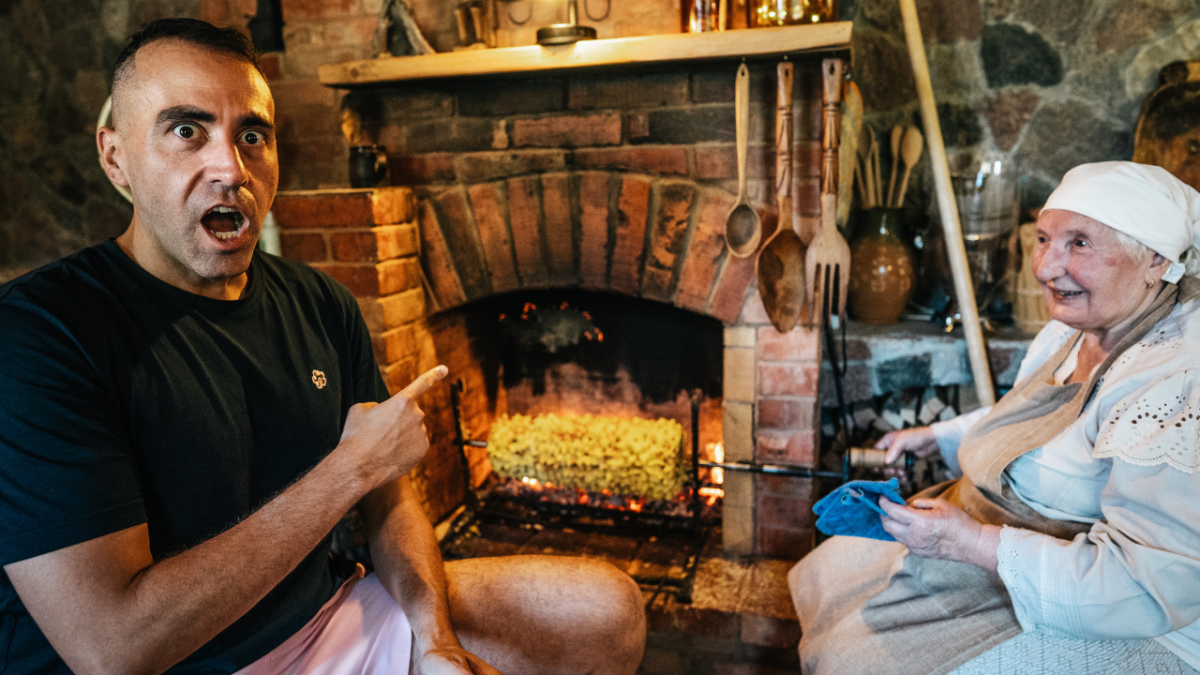Europe’s Oldest Cake? Šakotis in Lithuania
Lekėčiai is a small town in southwestern Lithuania with a population of 848 people. However, something magical happened here. I connected with one of the oldest traditions in Europe. Let’s talk about šakotis cake.
The Šakotis cake is more than a dessert in Lithuania. It’s a special way to connect with a very old tradition. Every year this huge cake covered with branches always graces their tables. A secret recipe that monks developed in the 15th century became such an iconic part of their Culture that I really needed to go to the foundations of this.
Before I forget, this is the video in case you prefer to watch a more complete version:
PART I: GERMAN OR LITHUANIAN?
Šakotis means “branched” so it reflects what the spit / tree cake typically is. But you can also find this in Lithuania with a different name: “raguolis” (spikes). Very often you’ll see this in Lithuanian weddings, Christmas Eve or even Easter.
However, the German Baumkuchen was the one inspiring so many different countries, including Lithuania. In Germany you’ll see a lot of variations and they built a very strong reputation around spit cakes.
When speaking to people in Europe, most likely they’ll say they’ve seen a variation of this cake in their countries. But I don’t believe that in many of those countries the spit cake plays such a key role in their cultures as I experienced in Lithuania.
I’ve taken a lot of footage so hopefully the video will give you a flavour of this magnificent piece of art.
PART II: THE MONKS’ SECRET
Let’s be honest. Every recipe has a story. Every product we have these days have some background. The story here is that monks kept this recipe in secret for more than 100 years. Why would they do that?
No one really knows why this was kept in secret for so long. Even when doing some research and speaking with locals the answer varies. “It was so good that they didn’t want to share with anyone else” is the standard answer.
The idea of a secret recipe is so cool. Anything that is a secret sounds interesting. It’s believed that the monks started to bake this in the early 15th century and there are more than 60 versions of this dessert across 15 countries (at least).
PART III: THE CAKE
The main ingredients of the cake are easy. Just eggs, sugar, cream, and flour. However, the most important part of the Šakotis process is to bake it on a rotating spit over an open fire. By the way, the one we prepared in the video required 25 eggs. For the medium version you need 50 and for a big party at least 100 eggs!
Even the smaller Šakotis looks big. The one we made was very yellow (it depends on the number of eggs you put), soft and fresh. Absolutely delicious. Just be aware that the ones you’ll find in supermarkets are industrial and definitely not even a shadow of what you can taste when you make on the rotating spit over an on open fire as we did.
The ladies we met have been doing this for decades. In fact, one of the ladies started when she was 17 years old. It’s pretty incredible that she keeps doing it, teaching people and sharing the tradition.
We spent a good 4-5 hours doing that but the process started earlier in the day as they prepared the batter and the fire. So this is definitely not an easy job and it requires a lot of time and attention. When I saw and experienced some of it, I really started to appreciate much more this cake… even though it was already my favourite Lithuanian dessert anyway!
There’s a lot more to cover but hopefully the video can complement it.




One Response
Comments are closed.